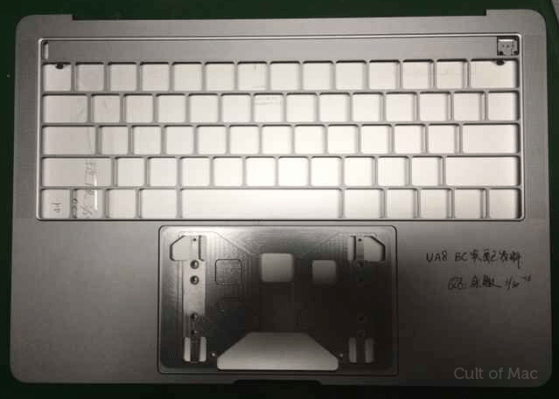Several photos have surfaced showing what is supposed to be the next iPhone and MacBook Pro over the last few days. These leaked photos themselves are not surprising. Apple spy photos are big business and a staple in tech journalism. But if these photos are to be believed, radical changes are about to hit two of Apple’s flagship products. And it’s about damn time.
The iPhone shots show a smartphone that’s smoother and less conspicuous than previous models. It also shows a cell phone without a 3.5mm jack traditionally used for headphones. If true, users will have to use an adapter or buy a new set of headphones that sport a Lightning connection.
Another report shows the MacBook Pro is about to get an overhaul. Gone are full size USB ports present on Apple laptops since the colorful iBook released in 1999. In its place are said to be four USB-C ports, which feature faster speeds but a different connection type that will force more adapters onto owners.
The redesigned MacBook Pro (pictured above) is said to also sport a long OLED touchpad that will replace the function keys that live above the number row. It’s speculated that users will be able to customize actions on this thin touchpad.
The same report states Apple is about to ditch its magical and magnetic MagSafe power connection.
Take a deep breath. The aforementioned changes are just rumors at this point and not confirmed by Apple.
Even if just half of the above turns out to be true, it will be good for Apple and perhaps the consumer. Apple has done this before and pushed the industry forward.
The original iMac didn’t sport a floppy disc drive. That was radical in 1998. USB flash drives were still a thing of fantasy. In 2001 the first iPod shipped with Firewire likely because USB 1.1 was too slow. And then in 2005, Apple dropped Firewire from the iPod. And the list goes on: optical drives, analog connections, even the long-used Dock Connector. In retrospect, dropping support for these technologies makes sense but at the time, the decisions felt radical and alienating
Since the late Steve Jobs’ returned to the company, Apple didn’t wait until the right time; it made the time right.
Since the late Steve Jobs’ returned to the company, Apple didn’t wait until the right time; it made the time right.
Look at the original MacBook Air. By today’s standards, the first MacBook Air is a mundane computer. It has a small screen, thin body, and long battery life. But in 2008 when it was released, it was the butt of jokes. Sure, it was thin, said bloggers at the time, but it lacked an optical disk drive and relied too much on wireless connectivity since it didn’t have an ethernet port. You’ll have to carry an optical drive and all sorts of adapters, they said.
Apple built the Air not for 2008, but for later when wireless networking was ubiquitous and optical disk drives were all but relics.
Look back at past Apple devices. Products change little over time. Apple tends to let products evolve until a complete overhaul is prudent. And this change tends to be painful for a generation or two after a radical upgrade — remember the pain in trying to find a Lightning cable shortly after the launch of the iPhone 5.
Apple builds its products around platforms much like an automaker. This is done likely to keep manufacturing and supply costs down. The iPad and iPod touch shares many parts with the iPhone. The MacBook Pro and MacBook sport similar layouts and components. But with this shared architecture comes the burden of making painful shifts every few years to set itself up for where technology will be in a few years.
Listen, I don’t want to lose my full size USB ports either. The MacBook Pro has long been my mobile machine of choice because of its plethora of connections and options. Change is hard and I don’t own a single device that recharges over USB-C. Yet. But if the past foretells the future, next year, at this time, I will probably own a handful of USB-C devices and more will be on the way.
I also own a killer set of headphones that, I guess, if I want to use them with the next iPhone, I’ll have to use in conjunction with a Lightning to 3.5mm adapter. Change is hard, friends, yet we’ve done it in the past and the world keeps spinning and Apple keeps printing money.
